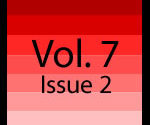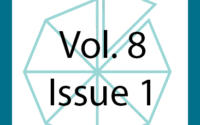Our First Special Issue: Medical, Gender, and Body Rhetorics
Present Tense is pleased to introduce our first special issue, which focuses on medical rhetoric and makes forays into gender and body rhetorics. Medical rhetoric, much like gender and body rhetorics, enjoys a rich interdisciplinary history and so feels at home in a journal dedicated to the rhetorical study of socially significant and timely topics. Medical rhetoric research has institutional homes across the university in diverse fields, such as composition studies, rhetoric of science, technical communication, writing in the disciplines, health communication, gender studies, and disability studies. Finding homes in so many fields makes the rhetorical study of health and medicine a “transdisciplinary” endeavor (Segal 239). We seek to contribute to the field’s history and even expand its endeavors with this double issue.
Medical rhetoric scholars often react to international and local issues, including epidemics, health care reform, political campaigns, legislation, government funding, and community-based care. Medical rhetoric projects “aim to be useful,” and projects’ “usefulness lies in their ability simply to pose questions that are prior to the questions typically posed by health researchers” (Segal 228). As such, medical rhetoricians frequently study “language events within the medical professions” and within larger public discourse (Heifferon and Brown 246). Because medical rhetoric scholars attend to global and local health issues, this research affects each of us in multiple ways: as scholars, researchers, and teachers, but also as recipients of the policies, procedures, and pharmaceuticals examined in this issue. By studying the rhetorical aspects of these subjects, we as health care recipients and rhetoricians can make more informed decisions about our health care and possibly bring about positive change in health and medicine. This issue’s authors, representing global and local views, exemplify this commitment.
Following Present Tense’s mission of exploring social, cultural, and political issues through a rhetorical lens, the authors examine timely and important issues as they relate to health and medicine. The subjects explored by the authors in this issue are especially intriguing and potentially influential given the health care policies debated in the current U.S. presidential election. Our special issue includes the following pieces:
A Womb With a View: Identifying the Culturally Iconic Fetal Image in Prenatal Ultrasound Provisions – Grounding her piece in House Bill 15, Rochelle Gregory illustrates how ultrasound visualization is a transformative act with political, medical, and ethical repercussions.
Inoculating the Public: Managing Vaccine Rhetoric – Monica Brown asserts that, in light of the most recent flu epidemic, rhetorical analysis serves to correct mistakes in vaccination campaigns, thus offering public health campaigns and the public control of health messages and behaviors.
Laboring Bodies and Writing Work: The Pregnant First-Year Writing Instructor – Jessica Restaino details the political and pedagogical complexities and challenges surrounding pregnant composition teachers inside the classroom and the larger academic institution.
Stasis Theory and Meaningful Participation in Pharmaceutical Policy – Christa Teston and S. Scott Graham use stasis theory to analyze the FDA’s public hearings on Avastin, a breast cancer drug, concluding that the hearings allowed only certain types of discussion and resulted in stakeholders disagreeing on crucial points.
“Wellness” as Incipient Illness: Dietary Supplements in a Biomedical Culture – Colleen Derkatch uses the rhetoric of dietary supplements to highlight popular notions of “wellness” and the public and political implications of these notions.
The Concept of Choice as Phallusy: A Few Reasons Why We Could Not Agree More – Situating their piece in the historical and current context of abortion debates, Amy Koerber, Amanda K. Booher, and Rebecca J. Rickly depict the rhetorical spaces surrounding these debates and the role women’s stories play in these spaces.
Healthy Eating: Metaphors We Live By? – Philippa Spoel, Roma Harris, and Flis Henwood’s empirical research illustrates how metaphors used in daily discourse construct our understanding of “healthy eating.”
Epideictic Rhetoric and the Reinvention of Disability: A Study of Ceremony at the New York State Asylum for “Idiots” – Zosha Stuckey argues that uses of epidiectic rhetoric reformed treatment paradigms and understandings of disability.
Research Update: Pain Medication and the Figure of the Pain Patient – Judy Z. Segal discusses a current research project in which she reconstructs the pain patient in public and medical settings.
An Annotated Bibliography of Literature on the Rhetoric of Health and Medicine – Jessica Masri Eberhard provides one of the first published annotated bibliographies on medical rhetoric.
Interview: Transplant Deliberations and Patient Advocacy – Melissa Christian, an organ transplant coordinator, spoke with Present Tense editors about how communication influences her everyday interaction with transplant teams, patients, and families. As a working medical professional, Christian provides medical rhetoricians with suggestions for how their work can contribute to medical practice.
Book Review: Black Dogs and Blue Words – Patty A. Kelly reviews Kimberly Emmons’ book on the rhetoric of depression, suggesting that a wide, cross-disciplinary audience may benefit from Emmons’ work.
Book Review: Disability and Mothering: Liminal Spaces of Embodied Knowledge – Ashlynn Reynolds-Dyk reviews Cynthia Lewiecki-Wilson and Jen Cellio’s edited collection. Reynolds-Dyk summarizes the book’s four parts and concludes with reflective thoughts on how different audiences may use this collection.
One goal of medical rhetoric is to contribute to public discussions of medicine and health. By making this special issue widely and freely available to the general public, we hope to add to these discussions. We hope you will participate in the conversation by commenting at the end of each article and reposting, tweeting, sharing, and “liking” the articles. We also hope you will find these articles useful in your classrooms. We invite you to comment on your pedagogical approaches in the comment fields below the articles.
In closing, we would like to thank our authors for their contributions to this issue. We also thank our guest editors, Steve Bernhardt, Scott Graham, Karen Kopelson, Dora Ramirez-Dhoore, J. Blake Scott, Judy Z. Segal, and Denise Valdés, for reviewing and recruiting submissions and providing feedback and advice. The success of this issue is due in large part to the authors’ and guest editors’ ongoing commitment to furthering medical rhetoric scholarship.
Sincerely,
Elizabeth L. Angeli, Annotated Bibliography Editor
Joshua Prenosil, General Editor
Cristyn L. Elder, Managing Editor
Megan Schoen, Managing Editor
Ehren Helmut Pflugfelder, Managing Editor
Caitlan Spronk, Technical Editor
Allen Brizee, Review Editor
Alexandra Hidalgo, Multimedia Editor
Don Unger, Print Editor
Jessica E. Clements, Style Editor
John Williford, Design Editor
Works Cited
- Heifferon, Barbara, and Stuart C. Brown. “Guest Editors’ Column.” Technical Communication Quarterly 9.3 (Summer 2000): 245-248. Print.
- Segal, Judy Z. “Rhetoric of Health and Medicine.” The SAGE Handbook of Rhetorical Studies. Eds. Andrea A. Lunsford, Kirt H. Wilson, and Rosa A. Eberly. Thousand Oaks, CA: SAGE, 2009. 227-245. Print.



